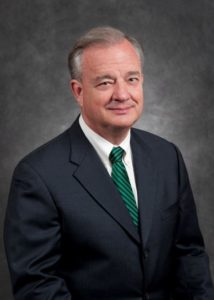Texas Doesn’t Need Another Veterinarian School

By John Sharp
 Texas does not need another veterinarian school to train rural veterinarians. Texas needs to find a way for more rural veterinarians to make a living.
Texas does not need another veterinarian school to train rural veterinarians. Texas needs to find a way for more rural veterinarians to make a living.In a Dallas Morning News column on Wednesday, Jay Leeson, a radio talk show host and columnist in Lubbock, perpetrated a false narrative, cherry-picking facts to champion the idea taxpayers should pay for a Texas Tech University vet school.
In 2016, the Texas Higher Education Coordinating Board concluded that no new veterinary school was needed in Texas, reiterating its 2009 findings. The board added that it would look at innovative approaches that did not duplicate Texas A&M’s efforts to address a “pending” shortage of large animal veterinarians. That’s it.
The study suggested three possible ways to address the issue, but Tech proponents ignored cheaper suggestions — such as student loan forgiveness programs for rural vets that more directly addressed any pending shortage.
Those pushing for Texas Tech to gain funding to build a new veterinarian school also ignore what A&M has done since 2009 to address the needs of our state’s agricultural industry. Mr. Leeson implies that anything Texas A&M is doing on the veterinary front is in response to Texas Tech’s announcement in December 2015 that it wanted to create its own veterinary school.
The fact is, our regional plan had been in the works for years. In 2010, West Texas A&M had submitted to the Legislative Budget Board an appropriations request to enable West Texas A&M, in collaboration with Texas A&M, to prepare students to practice in veterinary medicine with a specialization in large animals. It wasn’t funded, but the request is a public document with the Legislative Budget Board if anyone cares to look it up.
Here are the facts behind Texas A&M’s plan for veterinary education:
- In 2009, when the Coordinating Board study first said there was no need for a new veterinary school, it also asked Texas A&M to enlarge its class size.
- National accreditors, however, told us we could not increase enrollment without new buildings.
- In 2011, we asked the Legislature for $115 million for the veterinary education building, but no higher education facilities were approved that session.
- We then spent $125 million of Permanent University Fund money to build a state-of-the-art facility in College Station. It was recently finished. If needed, we could increase the size of the vet school by hundreds of new students.
- In 2015, a food-animal track was added at the vet school in addition to our long-existing large animal specialty.
- In January 2016, Texas A&M unveiled its plan to expand its veterinary efforts to four Texas A&M System universities, including West Texas A&M University in Canyon, just south of Amarillo. And it is succeeding.
We had been planning Texas A&M’s veterinary outreach to regional schools for several years. In 2015, we talked to Texas Tech about it. Texas Tech Chancellor Robert Duncan asked me to make Tech one of the schools. But since West Texas A&M was only a short distance away from Tech, it was not cost effective.
Duncan announced his veterinary school “plans” days later, knowing we were a week away from announcing the five-school collaboration, which we had been planning for more than two years.
Earlier this year, the Texas A&M University System announced about $90 million in ag-related construction on the campus of West Texas A&M. Leeson repeats that Texas A&M is just responding to Tech when actually the Legislature had partially funded our plan earlier. It had nothing to do with Tech; it was aimed at meeting the needs of the agriculture industry.
The only thing we added was the veterinary research and education center — an idea that dates back to that 2010 legislative request by West Texas A&M. Although it wasn’t funded by the Legislature, we did it with money from the Permanent University Fund. Again, it had to do with serving the agriculture industries in the region.
If there is one thing Texas taxpayers should know, it is this: Veterinary education, if done well, requires significant investment. From outside gifts and downright subsidies, we have subsidized our veterinary school millions of dollars every year. So, yes, we are concerned about diluting state appropriations when there is no real need to do so.
We have done everything the Coordinating Board asked of us, to the letter. So if Tech has an “innovative” plan, then take it to the Coordinating Board, and let it vote.
Our mission at the Texas A&M System is to do what the Coordinating Board and Legislature expects of one of the finest veterinary schools on earth. And that’s exactly what we are doing —without throwing tax dollars away on something that is not needed.
If there is some kind of rivalry between Tech and A&M, somebody forgot to tell us.
John Sharp has been chancellor of The Texas A&M University System since 2011.